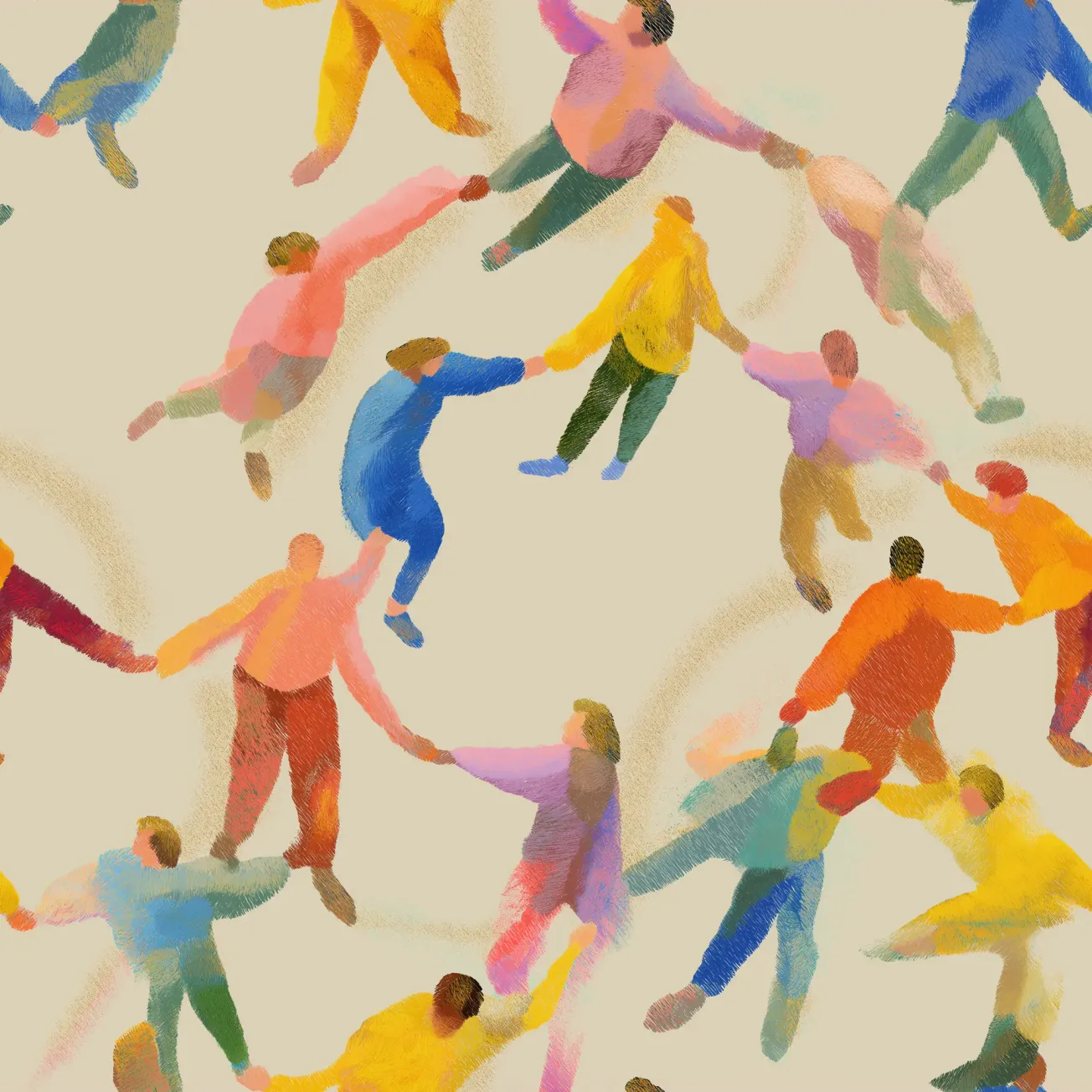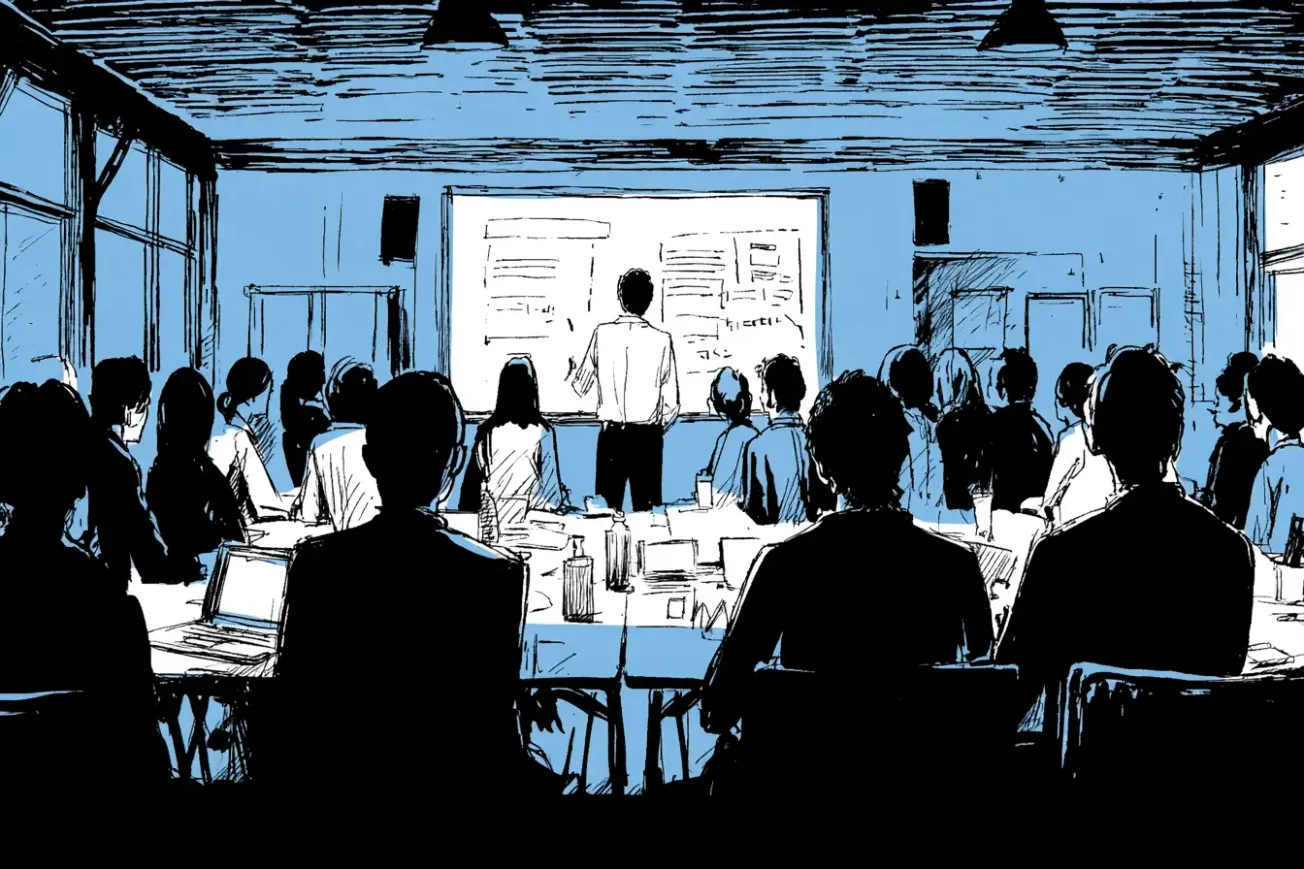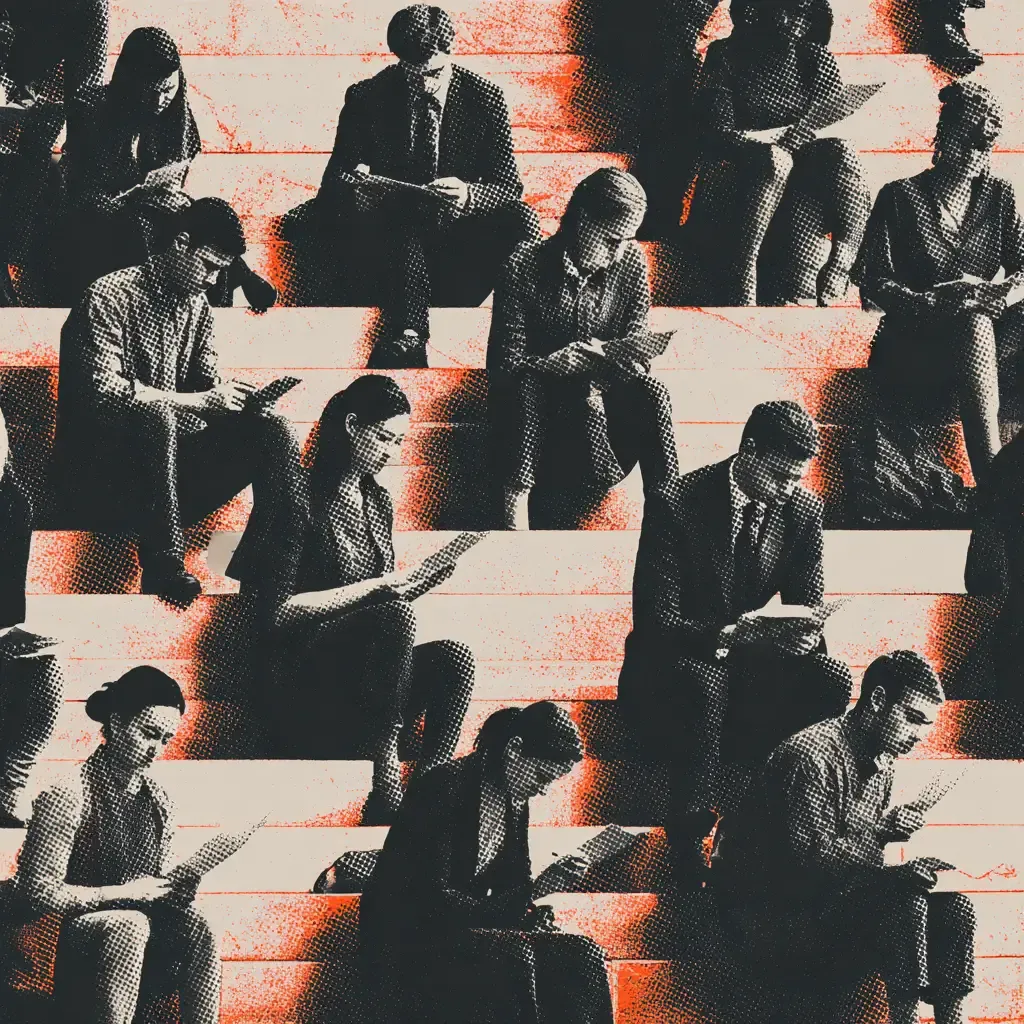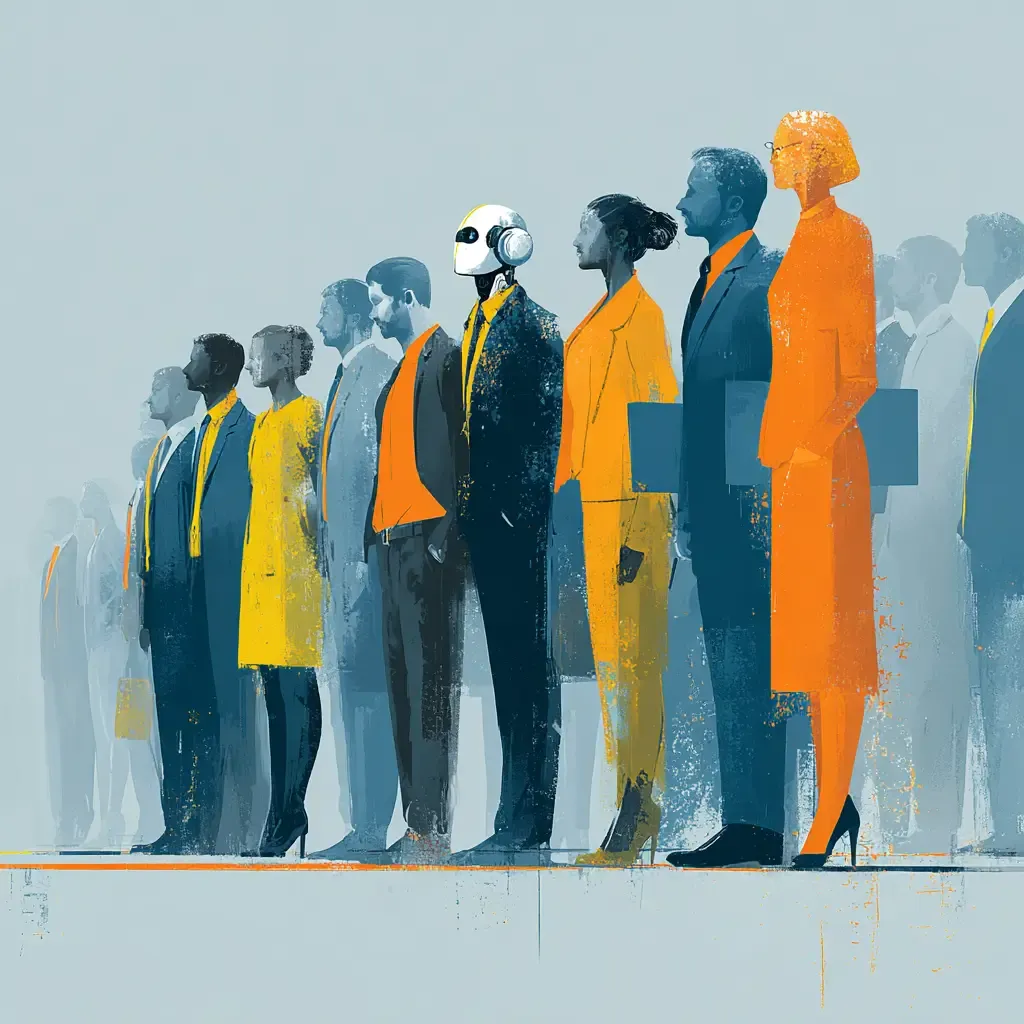The Line, #1
"Do you have a best friend at work?"
— Gallup Q12 Engagement Survey
The first time Stacey and I were put on a change portfolio together, it looked like a staffing spreadsheet error.
We were each leading major pieces of an enormous transformation effort: dozens of concurrent projects, scores of change resources, and enough PowerPoint decks to tile a mid-sized office park. The challenge? Build a unified change management strategy that worked across project silos, organizational layers, and vendor ecosystems—and show measurable value while doing it.
It was the era before Prosci's change scorecard. Before maturity models were mainstream. Before integrated dashboards gave you color-coded comfort. Back then, we made it up, tested it fast, and hoped it worked.
Somehow, it did.
We didn’t call it this at the time, but we became each other’s change partner, work confidant, and go-to sanity check. Over time, colleagues began referring to us as STAN (Stacey + Dan), because if you got one of us, you usually got the other. And that shorthand—STAN—became something more than a nickname.
It became a lifeline.
Why We All Need a Stacey
Change work can be lonely—and hard.
You're often the one raising the uncomfortable truth, surfacing risks that others would rather ignore, and advocating for behavior change in organizations that may not even want the technology change yet.
Having a trusted peer beside you changes everything.
- Someone who understands the emotional labor behind the deliverables.
- Someone who helps you calibrate your message, not just your metrics.
- Someone who has seen your strengths and your non-strengths, and still has your back.
In Gallup's Q12, one of the strongest predictors of employee engagement is deceptively simple:
“I have a best friend at work.”
It’s not just about friendship—it’s about trust, safety, and collaboration under pressure.
STAN Wasn’t a Strategy. It Was a Survival Mechanism.
Our portfolio was a pressure cooker: overlapping timelines, high visibility, competing consulting firms, and constant pivots. We had to harmonize a decentralized model with centralized standards, keep execs aligned while protecting teams from whiplash, and translate adoption into business value.
What made it work?
We had total trust in each other’s judgment.
Even though we had “similar-ish” backgrounds and experience, our individual operating models and skill sets were complementary.
Where I could ideate on demand and for hours, Stacey could boil it down to succinct action items. I was “What if?”, she was “Next steps.” We could look at a situation and completely flesh out the details—beginning to end.
Not only did we make each other better—we made the solution better and brought the team along.
We built a shared language. We could glance at a slide deck and know what the other would say in a steering committee. We divided work based on who had capacity, not turf. We coached one another in real time—often mid-call via side chats, texts, or looks across a meeting room.
And when the load got heavy (and it always got heavy), we carried it together.
No, STAN was not an intentional strategy—but make no mistake: it was an advantage.
The Infrastructure of Trust
Long after that portfolio wrapped, we’ve kept our partnership alive.
Today, decades later, we have:
- A private Discord server to share articles, ask quick questions, or vent.
- A mutual template stash to avoid reinventing wheels.
- An open-door policy for late-night check-ins, early-morning sanity checks, and “Do you have something like this?” requests.
- We’re still the #2 speed dial number on each other’s phones.
And, true story: Stacey was my first LinkedIn connection. That should tell you everything about the foundation of trust we built.
Whenever we’re pulled into a workshop or presentation together—even after years apart—it’s like no time has passed.
That kind of rapport can’t be manufactured. It has to be earned.
But once it’s built, it’s one of the most valuable assets in your career.
How to Find (or Become) a STAN
You can’t force this kind of connection. But you can nurture the conditions for it. Here’s how:
A. Work Loudly
Share your thinking, not just your output. Transparency builds trust.
B. Balance Strengths and “Non-Strengths”
Pay attention to people who are good at what you aren’t—the yin to your yang.
It was never me vs. you—it was us vs. them.
C. Build the Side Channels
Text. Chat. DM. The best coaching often happens outside formal meetings.
D. Be There Before You're Asked
Offer help before it’s requested. Catch the dropped balls. Protect the flanks.
E. Stick Around
The best partnerships are forged in the fire—but they’re sustained in the quiet seasons. Stay connected even when you're not actively working together.
Why This Matters More Than Ever
Change work is getting more complex. AI is accelerating timelines. Hybrid teams are fraying connections. Budgets are tightening even as expectations rise.
You can have the best frameworks, the slickest templates, the most robust dashboards.
But if you don’t have someone who gets you, you’re flying solo in a headwind.
Your best work may not come from the best plan—it may come from the best partner.
Final Thought
Stacey didn’t just make me better at change work. She made it possible to keep doing it without losing my sense of humor, my footing, or my sense of self.
So find your STAN.
Or better yet—be someone’s STAN.
You’ll move faster, go farther, and feel less alone on the journey.
ChangeGuild: Power to the Practitioner™
Frequently Asked Questions
What is a “STAN” in this context?
“STAN” is a shorthand for Stacey + Dan—two change leaders who built a high-trust, high-functioning partnership while leading a massive change portfolio. The article uses “STAN” as a metaphor for any trusted, complementary professional ally who makes the work better (and survivable).
Why does having a trusted colleague matter in change work?
Change can be isolating and emotionally demanding. Having someone who understands the stakes, shares the load, and complements your strengths helps you deliver better outcomes, stay grounded, and avoid burnout.
Is this just about friendship?
Not exactly. While trust and rapport are key, the article focuses on the professional value of having a partner who brings out your best thinking, balances your blind spots, and helps co-create better solutions. Think mutual performance enhancer, not office buddy.
How do I find a STAN of my own?
Start by working loudly and noticing who “gets” your rhythm. Pay attention to people who are strong where you’re not. Offer help before it's asked. Build trust in the trenches—and invest in staying connected, even after the project ends.
Can I be someone’s STAN without a formal title or role?
Absolutely. This isn’t about hierarchy—it’s about showing up, co-owning the mission, and making each other better. You don’t need permission to be useful, loyal, or thoughtful. That’s how most STANs start.
Need a STAN in Your Corner?
You don’t have to navigate complex change work alone. Whether you're building your bench, seeking a sounding board, or just want to stay sharp with people who get it—we’ve got a community for that.
This post is free, and if it supported your work, feel free to support mine. Every bit helps keep the ideas flowing—and the practitioners powered. [Support the Work]





